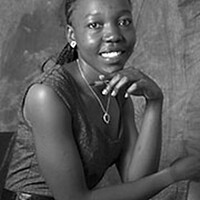Tamar Rice video: What new analysis says about his shooting
Loading...
An analysis of security camera video of the fatal shooting of a 12-year-old boy show his hands in his jacket pockets and never reached for the airsoft pellet gun that was tucked in his waistband when a Cleveland police officer fatally shot him, an expert in biomechanics and kinetics says.
According to a report released late Friday by an expert hired by the boy's family to review a frame-by-frame video of the shooting, Tamir Rice did not have enough time to remove his hands from his pockets before being fatally shot and his hands were not visible to the officer.
Dr. Jesse L. Wobrock, an accident reconstructionist and biomechanics expert concluded that, "The scientific analysis and timing involved do not support any claim that there was a meaningful exchange between officer Loehmann and Tamir Rice, before [Tamir] was shot," according to Cleveland.com.
Tamir was shot after authorities responded to a call about a man waving around a gun outside a recreation center in November 2014.
Timothy Loehmann, The rookie officer who fired the fatal shots, told investigators he repeatedly ordered the boy to "show me your hands" then saw Tamir pulling a weapon from his waistband before he opened fire, according to the Associated Press.
It turned out to be Tamir holding a realistic-looking toy gun.
Previous reports concluded that Loehmann shot Tamir within 1.7 seconds of opening the car door. But according to the review by California-based shooting reconstruction expert Jesse Wobrock, the officers shot him within less than one second after he exited the police car.
Wobrock report states that Tamir could not have heard commands to show his hands, since the patrol car windows were rolled up.
"Based on the timing of this event, Tamir Rice did not have enough time to perceive and react to any verbal commands, which is exemplified by the fact that his right hand was still in his jacket pocket at the time he was shot," Wobrock said.
This new analysis of the video contradicts what experts hired by the prosecutor’s office have found.
In October, retired Virginia FBI agent Kimberly Crawford and Denver-area District Attorney S. Lamar Sims, nationally renowned experts on police use-of-force issues released a report stating that the shooting was justified.
"There can be no doubt that Rice's death was tragic and, indeed, when one considers his age, heartbreaking," Sims wrote in a 52-page analysis. "However, I conclude that Officer Loehmann's belief that Rice posed a threat of serious physical harm or death was objectively reasonable as was his response to that perceived threat."
The release of Wobrock report comes as a grand jury is currently hearing evidence on whether Loehmann should be charged criminally.








